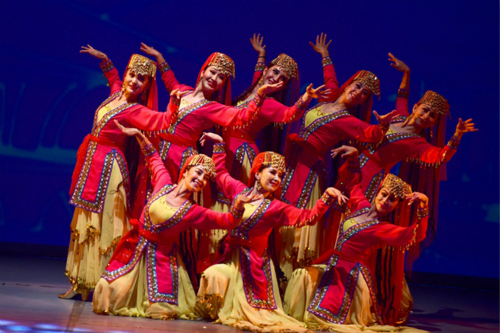
新疆的文化保护与发展文章源自英文巴士-https://www.en84.com/6106.html
Cultural Protection and Development in Xinjiang文章源自英文巴士-https://www.en84.com/6106.html
文章源自英文巴士-https://www.en84.com/6106.html
中华人民共和国国务院新闻办公室文章源自英文巴士-https://www.en84.com/6106.html
The State Council Information Office of the People’s Republic of China文章源自英文巴士-https://www.en84.com/6106.html
文章源自英文巴士-https://www.en84.com/6106.html
2018年11月文章源自英文巴士-https://www.en84.com/6106.html
November 2018文章源自英文巴士-https://www.en84.com/6106.html
文章源自英文巴士-https://www.en84.com/6106.html
目录文章源自英文巴士-https://www.en84.com/6106.html
Contents
前言
Preamble
一、新疆各民族文化是中华文化的组成部分
I. Xinjiang Ethnic Cultures Are Part of the Chinese Culture
二、各民族语言文字广泛使用
II. The Spoken and Written Languages of Ethnic Groups Are Widely Used
三、宗教文化受到尊重和保护
III. Respecting and Protecting Religious Culture
四、文化遗产保护和传承取得成就
IV. Protecting and Carrying Forward Cultural Heritage
五、文化事业和文化产业不断发展
V. Constant Development of Cultural Undertakings and the Cultural Industry
六、对外文化交流日趋活跃
VI. Active Cultural Exchanges with Other Countries
结束语
Conclusion
前言
Preamble
中国是统一的多民族国家。在5000多年文明发展史中,中华各民族共同创造了悠久历史、灿烂文化。新疆自古以来就是多民族迁徙聚居生活的地方,也是多种文化交流交融的舞台。在历史长河中,新疆各民族文化扎根中华文明沃土,既推动了各民族文化发展,也丰富了中华文化内涵。
China is a unified multi-ethnic country. In the course of a civilization that dates back more than 5,000 years, the various ethnic groups of China have created a long history and a splendid culture. Since ancient times many ethnic groups have made their way to Xinjiang, and it has become their home and a place for cultural integration. Various ethnic cultures of Xinjiang have their roots in the fertile soil of Chinese civilization, advancing their own cultural development while enriching the overall culture of China.
中华人民共和国成立后,中国政府高度重视新疆各民族优秀传统文化的挖掘、传承与保护,坚持创造性转化、创新性发展,鼓励各民族相互学习语言文字,促进各民族交往交流交融,尊重各民族宗教信仰自由,推动文化事业和文化产业发展,推进各民族文化现代化,加强对外文化交流,在不同文化交流互鉴中,增强文化自信。
Since the People’s Republic of China was founded in 1949, the Chinese government has attached great importance to documenting and protecting the excellent traditional ethnic cultures in Xinjiang, and ensuring that they are passed on to succeeding generations. It has promoted creative transformation and innovative development, encouraging these ethnic groups to learn spoken and written languages from each other, promoted communication and integration, respected their freedom of religious belief, and worked to develop their cultural undertakings and industries. The government has worked to modernize ethnic cultures, to strengthen cultural exchanges with foreign countries, and to enhance each group’s cultural confidence while engaging in exchanges with and mutual learning from others.

